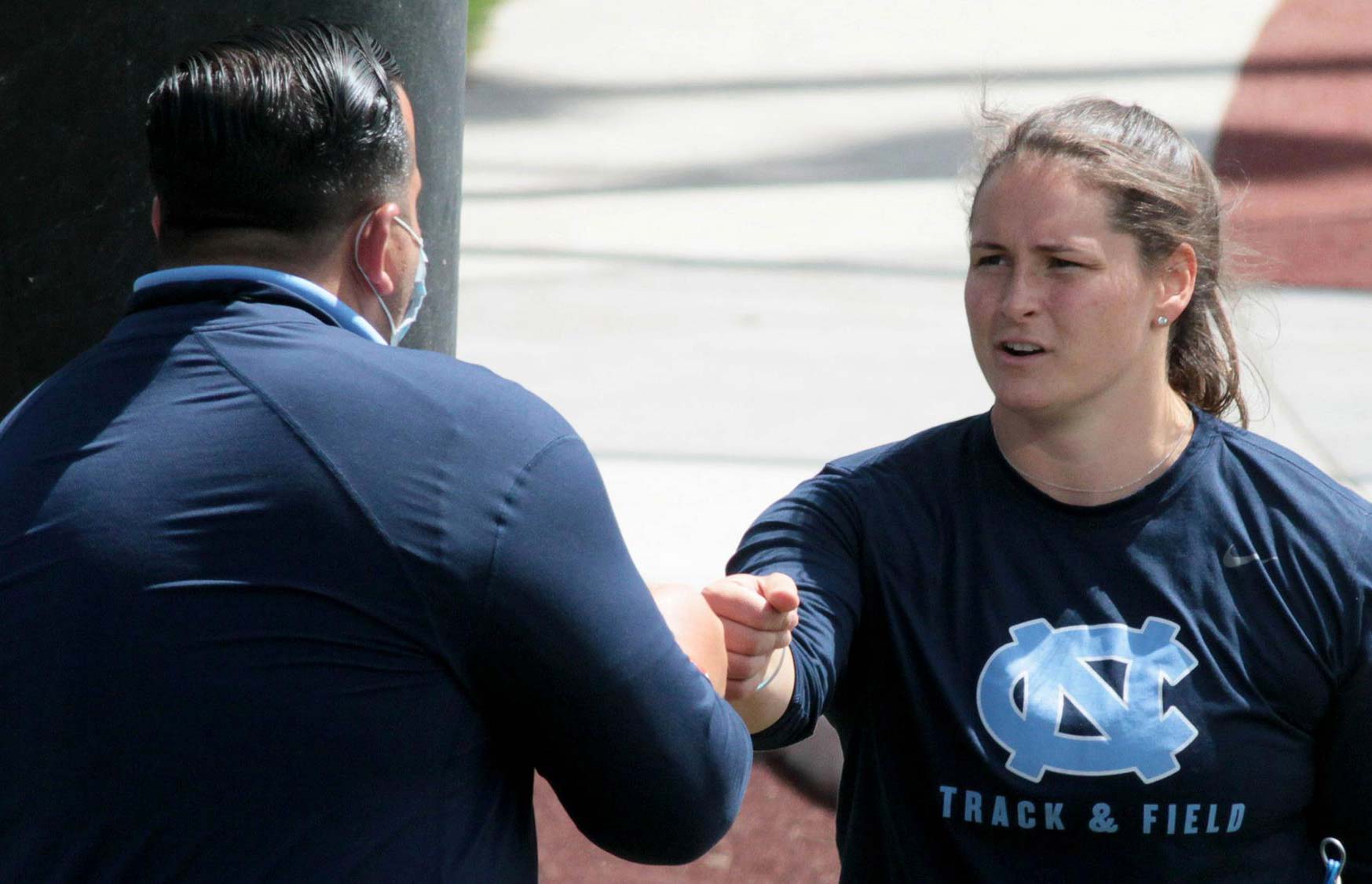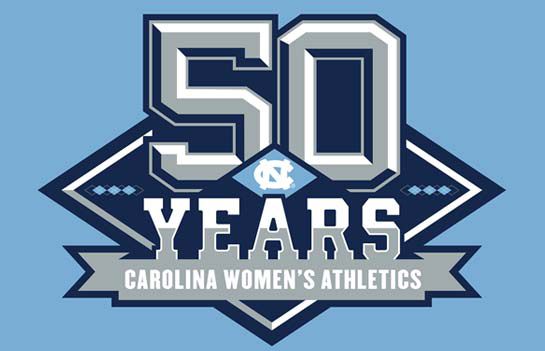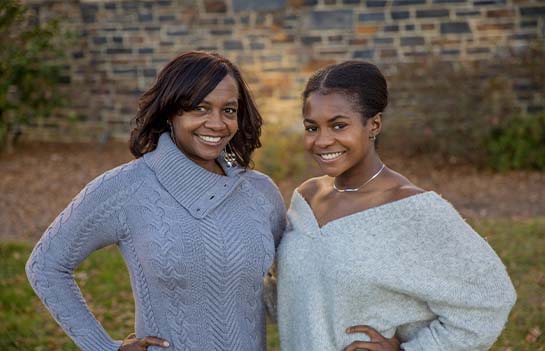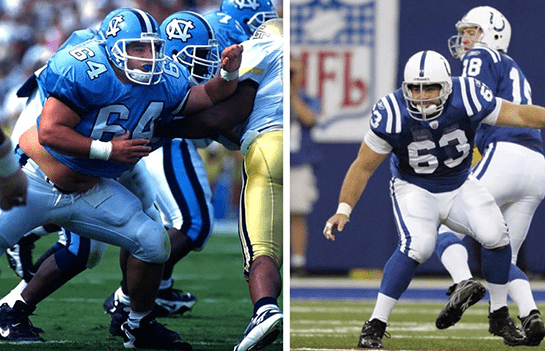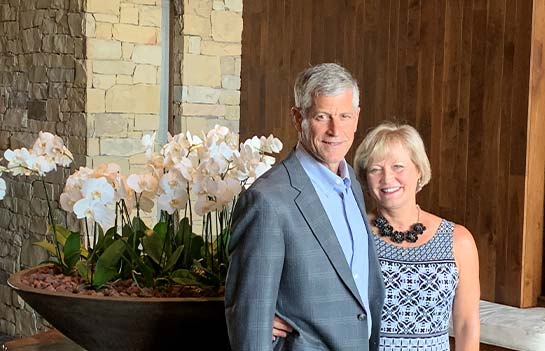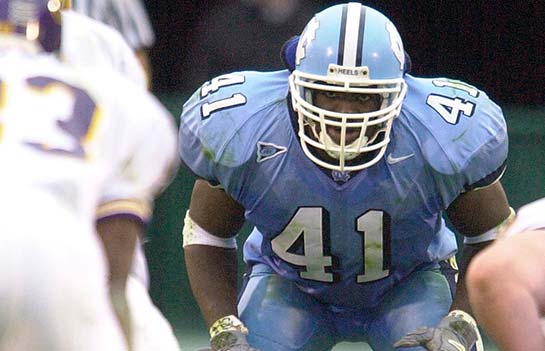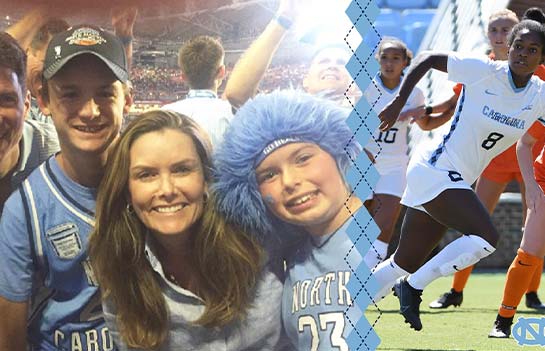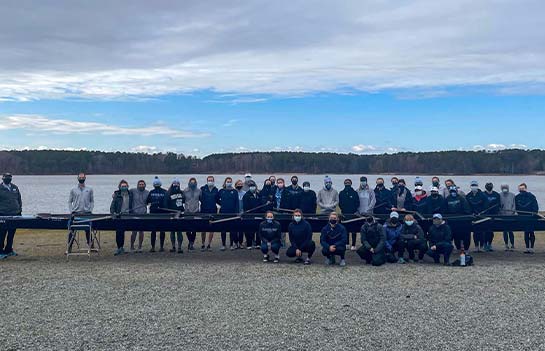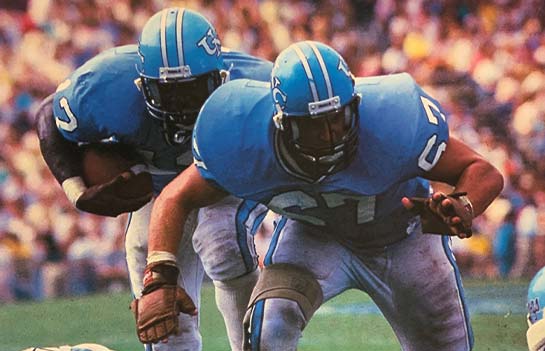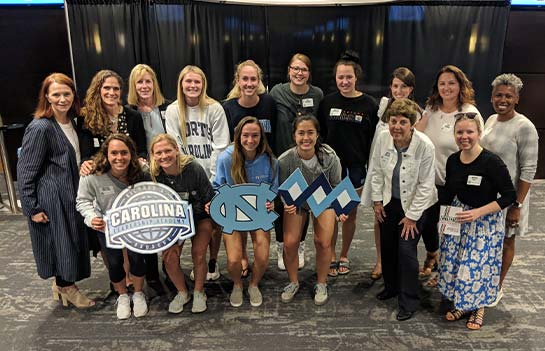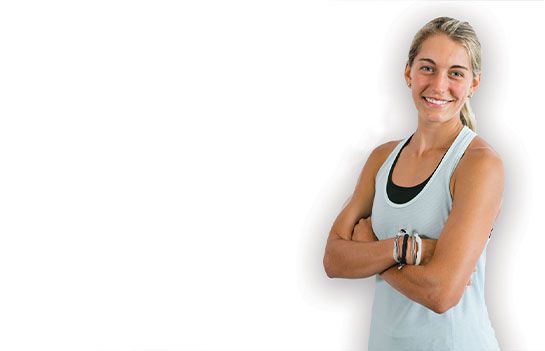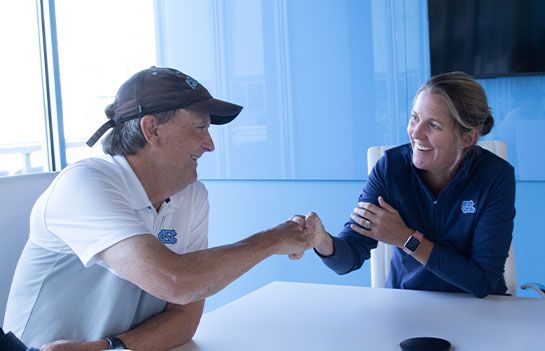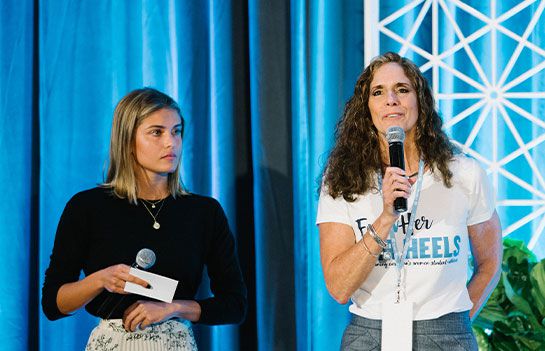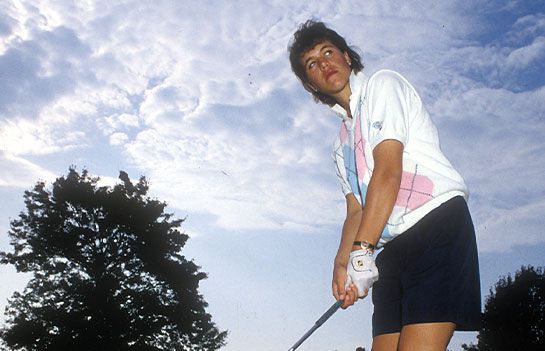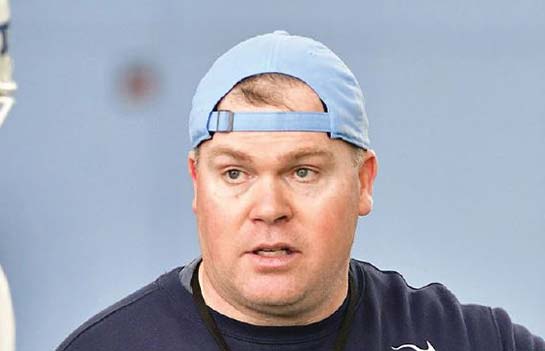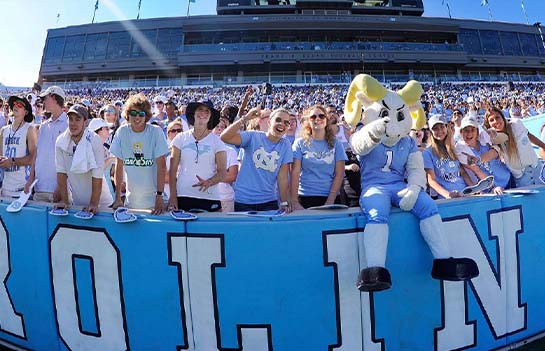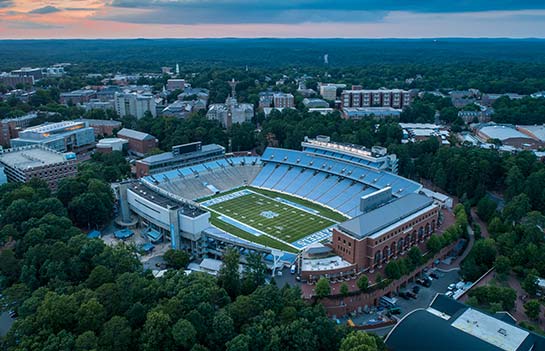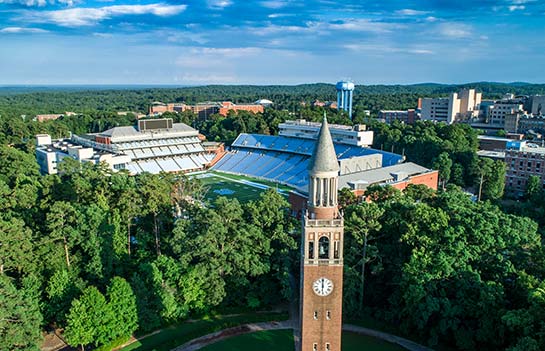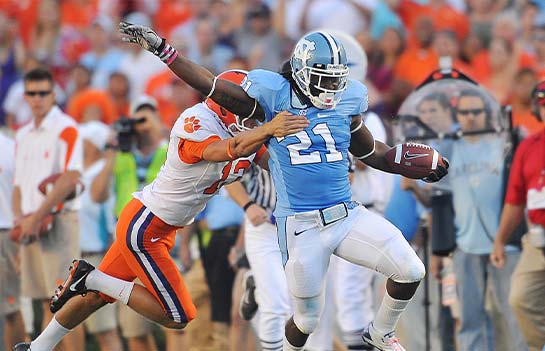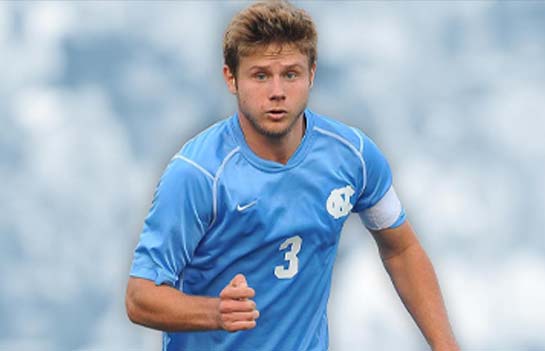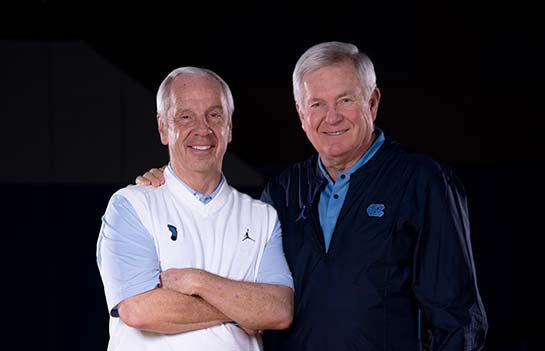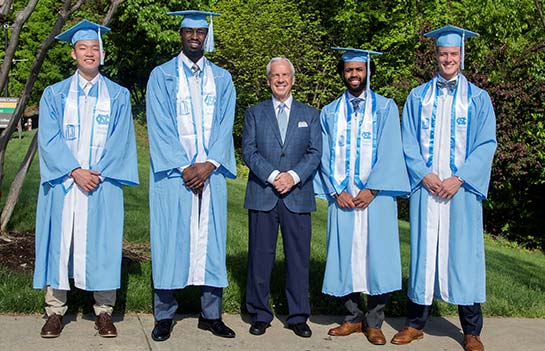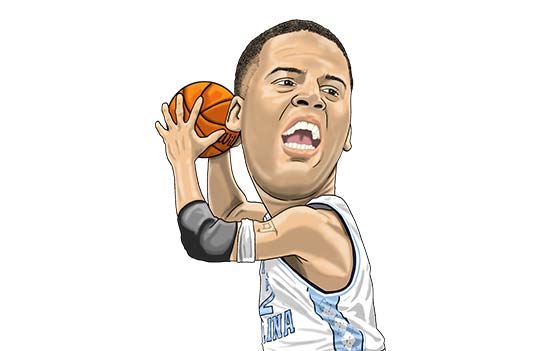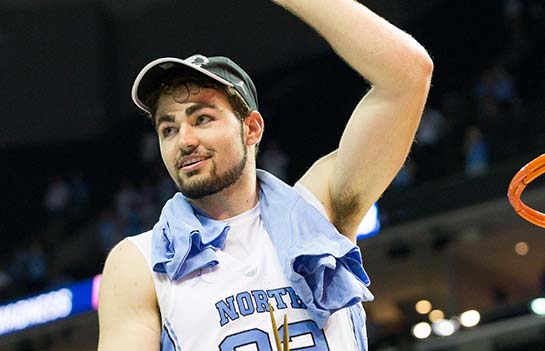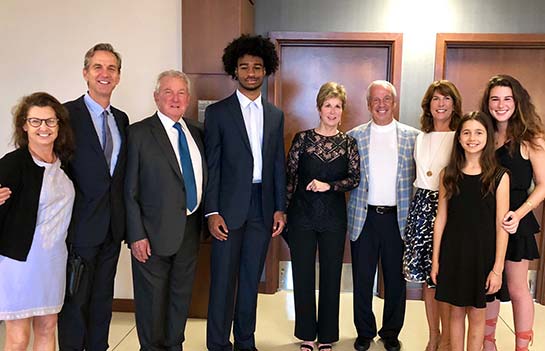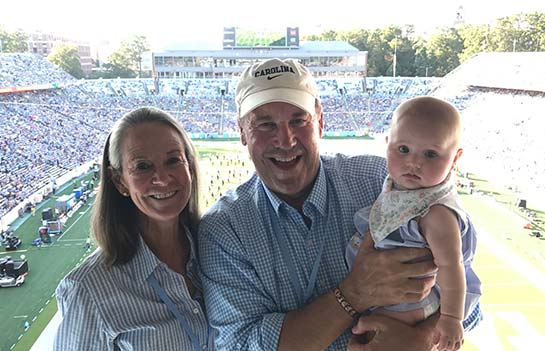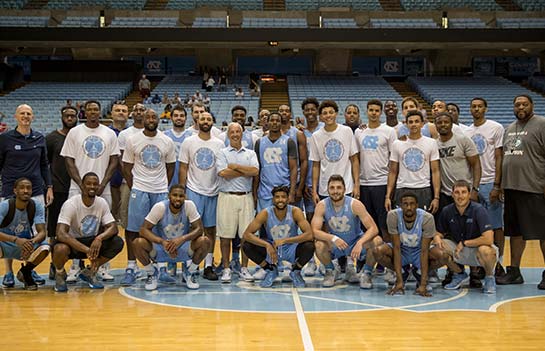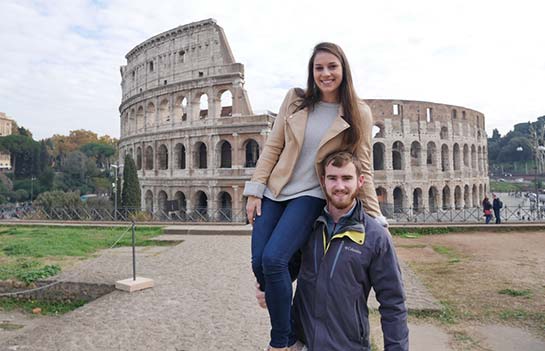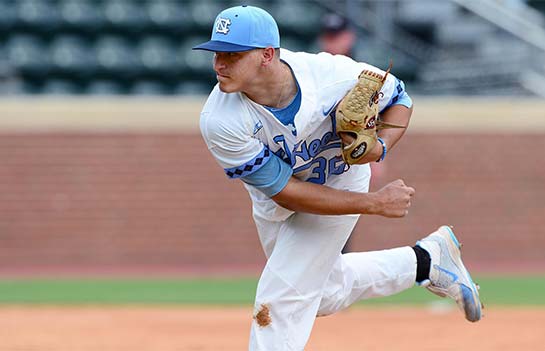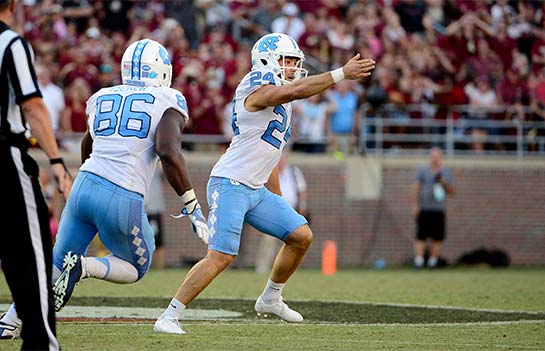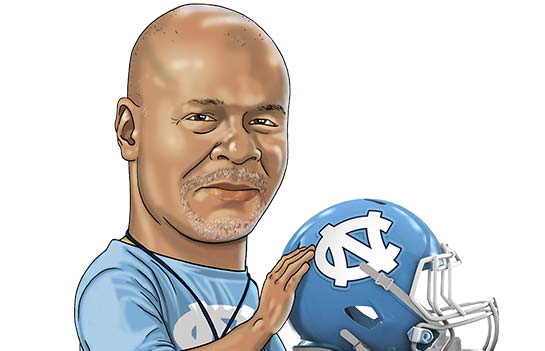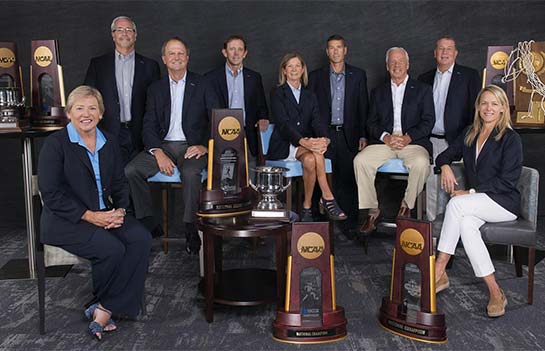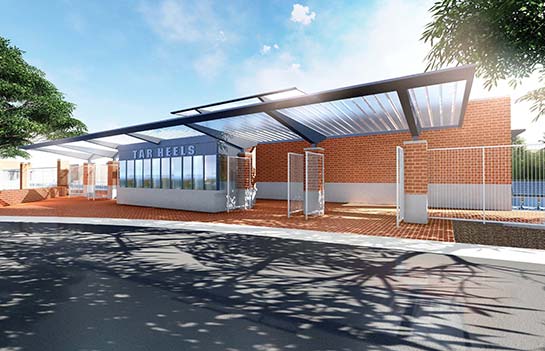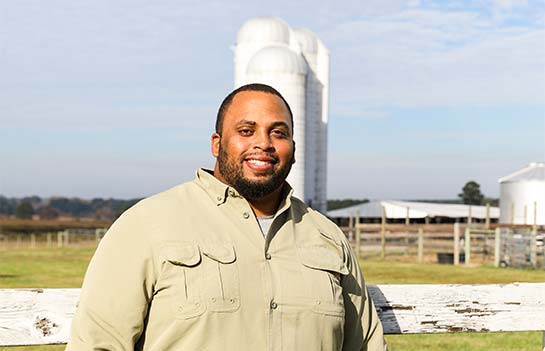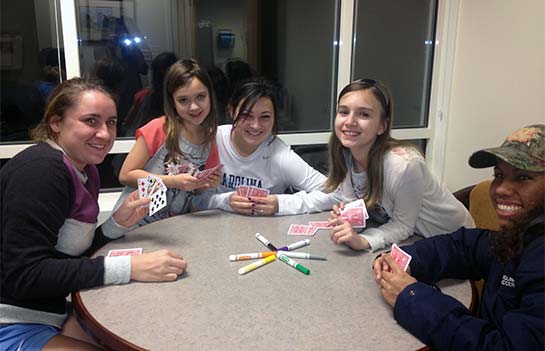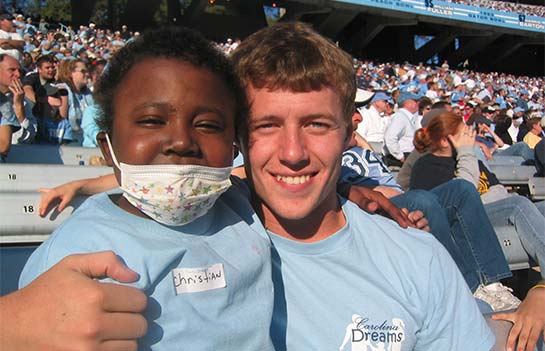A NEW PLACE TO GO
GOING WHERE THEY GO WILL BE MUCH MORE PRODUCTIVE FOR MULTIPLE TAR HEEL TEAMS WHEN A HUGE FACILITY PROJECT IS COMPLETED
By: LEE PACE / Photos by: UNC ATHLETIC COMMUNICATIONS
Your women’s soccer team is ranked No. 1 in the country, but you’re moving an ACC game from your home field on campus to a community park six miles away in October 2015 because of heavy rains forecast and your field can’t take the water.
Your women’s lacrosse team has just won the NCAA regional in May 2013 but has no place to practice the week leading to the Final Four because of rain, construction and the normal demand of available facilities by other teams.
And your sprinters and hurdlers are training for the ACC Championships the second week of May, but the success of the lacrosse teams needing Fetzer Field for playoff games cuts back on their training time.
“So often we had to modify our workouts because of the demands on Fetzer from other sports,” says Kenny Selmon, a record holder in the 400-meter hurdles. “It’s never good to modify your workout. If it’s because of injury, that’s one thing. If it’s because of lacrosse practice, you question how effective your workout really was.”
Needless to say, student-athletes and coaches of a dozen Carolina teams are anxiously awaiting the completion of a massive, $115 million facilities overhaul of the “South Campus Sports Complex” and a satellite cluster on land adjacent to Finley Golf Course. Men’s and women’s teams in lacrosse, soccer, track and field and cross country, the field hockey team and the Tar Heel football program will enter the 2018-19 academic year with a vast array of new home fields and venues for training, practice and competition.
“This is an absolute game changer in so many respects,” says Anson Dorrance, who founded the Tar Heel women’s soccer program in 1979 and has won 22 national titles. “We are overjoyed to say the least. This has been a long time coming.”
“We’ve never had so many projects simultaneously affecting so many student-athletes at one time,” adds Karen Shelton, the field hockey coach since 1981 and winner of six national titles. “This is big. I’m excited for all our sports.”
The first domino to fall in this ambitious project that began construction after commencement last May was the need to rebuild Fetzer Field, a 1935 venue used for track, lacrosse and soccer with a field that drained poorly and a hundred-yard long row of concrete bleachers across the north side set well back from the playing field. The second was the need to give Carolina football a full-sized indoor practice facility and solve the problem of it being only one of two ACC schools without one (Miami being the other).
Thus the 12-acre parcel that housed Fetzer, Navy Field and the field hockey home of Francis Henry Stadium is being rebuilt into a stand-alone stadium for lacrosse and soccer and next door to the south is the indoor facility and two outdoor fields that will be primarily used by football.
That left field hockey and track and field needing new homes. The former issue is being solved with a field hockey stadium on the site of the Ehringhaus intramural field and the latter by building a track and field complex at what is being called Finley North. Adjacent to the new track are separate practice fields for soccer and lacrosse. And on the south side of Old Mason Farm Road, leading to the UNC Finley Golf Course clubhouse from the 15-501 Bypass, are two natural grass practice fields for soccer named Finley South.
Already in the fall of 2017 and early 2018 the soccer and lacrosse teams are benefitting from the new Finley fields, all of which have been built with state-of-the-art turf, drainage and water-management technology in a flood plain.
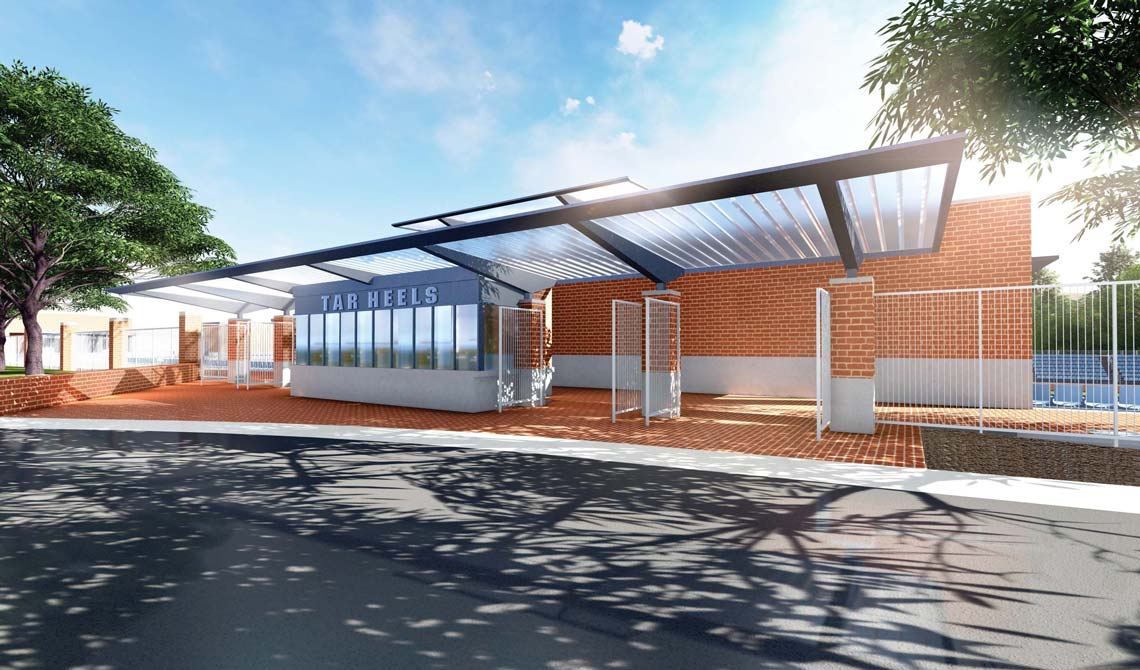
“The quality of our training environment has jumped significantly,” says Dorrance. “The new facility drains so well. The old fields were built in a floodplain and if it rained, not only was it difficult to train, it was hazardous. These are the best fields I’ve ever trained on—and that’s counting some of the top fields in the sport I’ve seen as the national coach.”
And despite Chapel Hill being hit with two snowstorms in January, one of them 12 inches, women’s lacrosse head coach Jenny Levy says her team missed only one day of winter conditioning.
“The crew did an unbelievable job clearing the field so we could get on,” she says. “The new stadium and the new Finley Fields will have an impact on our program that can’t be measured. We have been the most nomadic team of all over the 23 years I’ve been here. We have always been at the mercy of weather and other teams’ scheduling. You cannot be at your best if you have no clue where you’re going to practice on a day-to-day basis.”
Dorrance, Levy and fellow coaches Joe Breschi (men’s lacrosse) and Carlos Somoano (men’s soccer) are looking forward to soccer in the fall of 2018 and lacrosse the following spring in their 4,200-seat stadium. The venue will have seats on three sides and room for an entertainment plaza on the fourth side, and a natural grass surface built on 10 inches of sand and four of gravel and will drain as well as the field in Kenan Stadium.
Dorrance cites two advantages that all four teams will gain immediately: a quality playing surface and the opportunity to generate a true home-field advantage.
“The surface itself will be so much better,” he says. “And there was no personality in a soccer stadium if fans are sitting outside a track that surrounds the field. We’ve had no real atmosphere, and now all of a sudden fans will move to the edge of the field and surround it on three sides. The proximity of fans close to the field will be absolutely fantastic.”
“We’ll now be able to feed off the crowd,” adds Breschi. “It’s going to be a like a soccer pitch where everyone’s on top of you. Our team is really pumped for next year.
“We’ve had a packed house for several games over the last 10 years since I’ve been back, but you never felt it. The fans were just too far away and spread out too much.”
Just to the south side of the new stadium will be the indoor football facility, which Larry Fedora has lobbied for since he arrived at Carolina in 2012. A common misconception about the facility is that it’s there for practice on inclement weather days during the season and spring ball. That couldn’t be further from the truth as strength and conditioning coach Lou Hernandez and his staff will make more use of the building than the coaches. The new facility will have a sand pit and an incline running track—all the better to give Hernandez flexibility in training the Tar Heel athletes.
“Our two most important training periods are winter and summer,” he says. “In winter you’re battling rain, snow and wet fields. In summer it’s pop-up thunderstorms and lightning. You’re constantly monitoring the Weather Channel and you’re constantly juggling schedules. The new building will allow us to lock in on a schedule and stick to it.”
Other sports will have access to the building when football’s not using it.
“We’ll certainly take advantage of the indoor facility when it’s available,” Breschi says. “To get out of the elements in the winter and do stickwork, have a place guys can go and shoot during the course of the day and get extra reps will be fantastic.”
Field hockey will move into a new venue next door to Boshamer Stadium and will share it with Campus Rec, which operated the intramural field that had been there before. The Tar Heels will have a 900-seat stadium, new team building and an Astroturf surface like the one used in the last two Olympics.
“We were very happy in Henry Stadium, but if it was to the benefit of the entire athletic program, we are fine with the move,” Shelton says. “It’s a fabulous location. I love the fact it’s in the middle of South Campus and will have a lot of visibility with kids walking right past it. Hopefully, some will look in to see what’s going on and we’ll get a few more fans.”
Track and field coach Harlis Meaders will continue to operate his programs on-campus out of offices in the Eddie Smith Field House, and indoor practice and competition will continue there. But outdoors training and competition will move to Finley North, which will feature a track manufactured and installed by Benyon, the leader in outdoor track facilities.
“It will be a state-of-the art training facility, but most importantly will be a dedicated track facility,” Meaders says. “We’ll no longer have a shared facility with soccer and lacrosse. We can expand the reach of our program by hosting meets in the spring that we couldn’t before because of lacrosse.”
All the tangible benefits to practicing and competing in top-notch venues aside, the new facility overhaul will certainly help Carolina continue its rich athletic tradition by attracting a higher quality of athlete.
“This was a critical move for us,” Dorrance says. “I will make a challenge to every kid who visits us that they cannot go and find a better stadium. We have already seen it draw great players for the 2018, ‘19 and ‘20 recruiting classes.”
“All kids today want that ‘wow factor,’ they want to say, ‘Oh my gosh, look at this place,’” adds Shelton. “These new facilities are going to impress a lot of up and coming talent to come to look at our campus—not just field hockey, but every sport. When we bring a prospect in, we don’t just tour our own facility, we tour them all. We are the ‘University of National Champions.’ I’m very excited for our future.”
This story appeared in the FEBRUARY 2018 edition of Born & BredMore Stories
The impact of giving comes through in wonderful stories about Carolina student-athletes and coaches, as well as the donors who make their opportunities possible. Learn more about the life-changing impact you can have on a fellow Tar Heel through one of the features included here:
